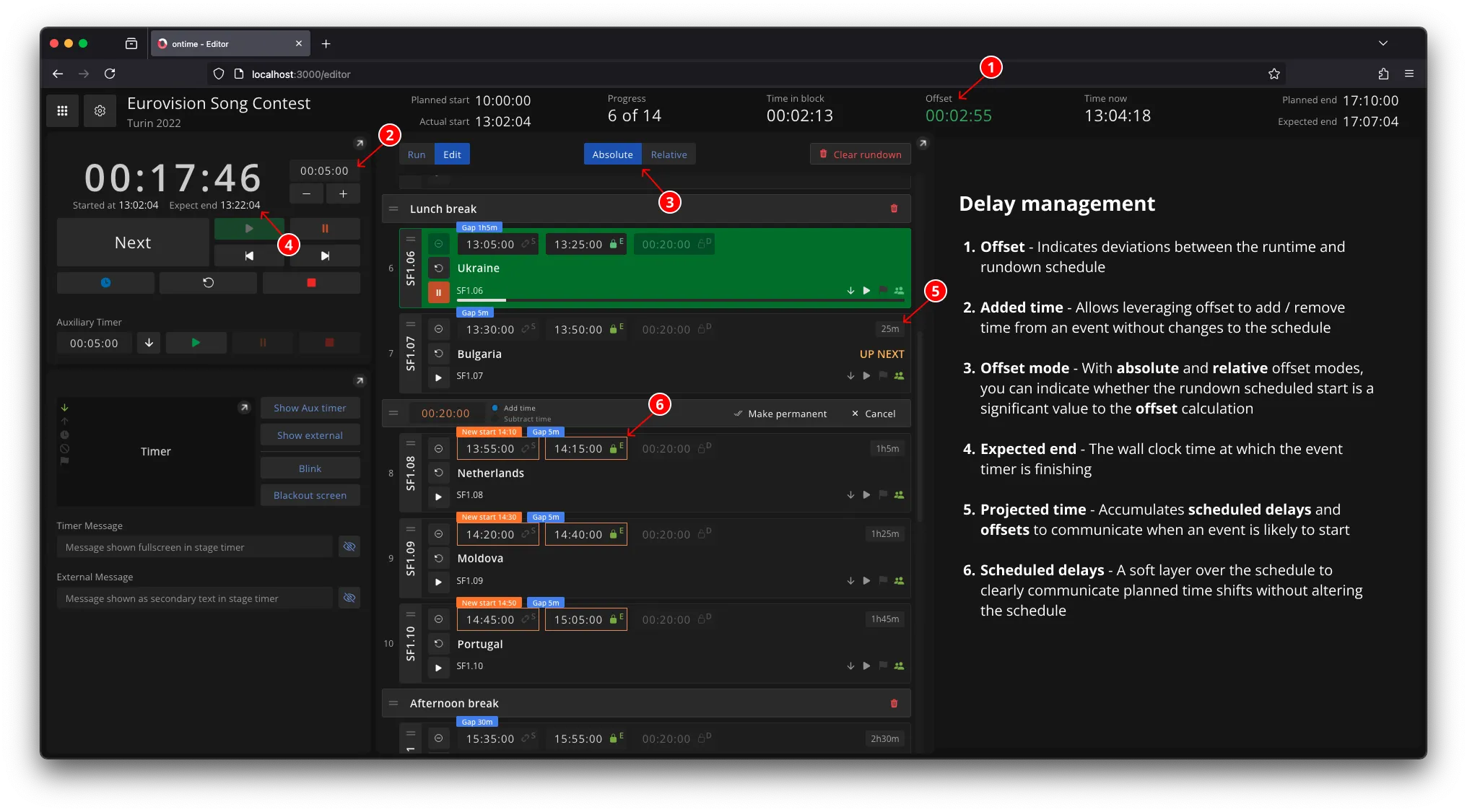Managing delays
In live environments, things don’t always go exactly as scheduled. Events may start late, run long, or require timing adjustments.
Ontime provides tools to communicate and manage these delays during production.
The key features for delay management are:

Added time
Section titled “Added time”You can manually add or remove time from the currently running event, either from the editor view or via the API.
This is the simplest form of delay management
Added time adjusts the offset and expected end values, letting you extend or compress the active event without altering the rundown schedule.
Expected time
Section titled “Expected time”Expected time combines scheduled delays and offsets to communicate the accumulated timing shifts during a show.
i.e. based on the current trajectory, when are we expected to start any given event.
Scheduled delays
Section titled “Scheduled delays”Scheduled delays represent intentional timing adjustments in the rundown.
Unlike added time, scheduled delays are layered over the schedule without changing it.
This allows the original timing to remain intact while clearly communicating a change to your team.
You can apply a scheduled delay permanently, making it part of the schedule.
Once applied, Ontime no longer treats it as a schedule deviation.
Offset
Section titled “Offset”The offset indicates how far the current runtime has drifted from the original schedule and our capacity to finish the rundown on time.
Offsets can be positive (running early) or negative (running late).
Absolute mode
Section titled “Absolute mode”Absolute mode is the default mode for offset calculation in Ontime.
It compares the current wall clock time to the rundown scheduled to show how far ahead or behind we are running.
Examples of Absolute offset calculation
Section titled “Examples of Absolute offset calculation”Relative mode
Section titled “Relative mode”Relative mode calculates offset based on when the rundown actually started, ignoring the rundown scheduled start.
This mode is useful when the exact start time is not relevant (eg: during rehearsals, recordings, or pre-show prep) but we still want to keep track of time drifts during the runtime.
